The European Accessibility Summit held its second edition in a hybrid event with the participation of speakers from the European Commission, Disabled Persons Organisations (DPOs) and a range of businesses and business representatives.
The European Disability Forum (EDF) organised this Summit with the support of Microsoft for a two day event with the main theme “From Policy into Practice”.
Day 1: 31st of May
The online Summit was framed at the opening by EDF’s president, Yannis Vardakastanis. He recalled that despite the ratification of the Convention of Rights for Persons with Disabilities (CRPD), the European Union is lagging behind in the policies and legislations for persons with disabilities. Mr Vardakastanis underlined that DPOs need broad support from all policymakers and stakeholders, for the transposition of the accessibility act into national law in the coming weeks.
Nevertheless he noted the accessibility focus that the EU Commission has integrated into the new EU Accessibility Rights Strategy but not forgetting that it is crucial to “make sure that persons with disabilities are involved in the development of the accessibility policy, the implementation, and monitoring”.
Commissioner for Equality Helena Dalli made an opening address emphasising that accessibility is an enabler for persons with disabilities to reach “their full potential” but which unfortunately “cannot be taken for granted”. During her intervention, Commissioner Dalli highlighted that the EU is working to ensure that accessible and inclusive technologies become enablers in all areas because – as she pointed out – “for persons with disabilities, accessibility is needed to participate in society”.
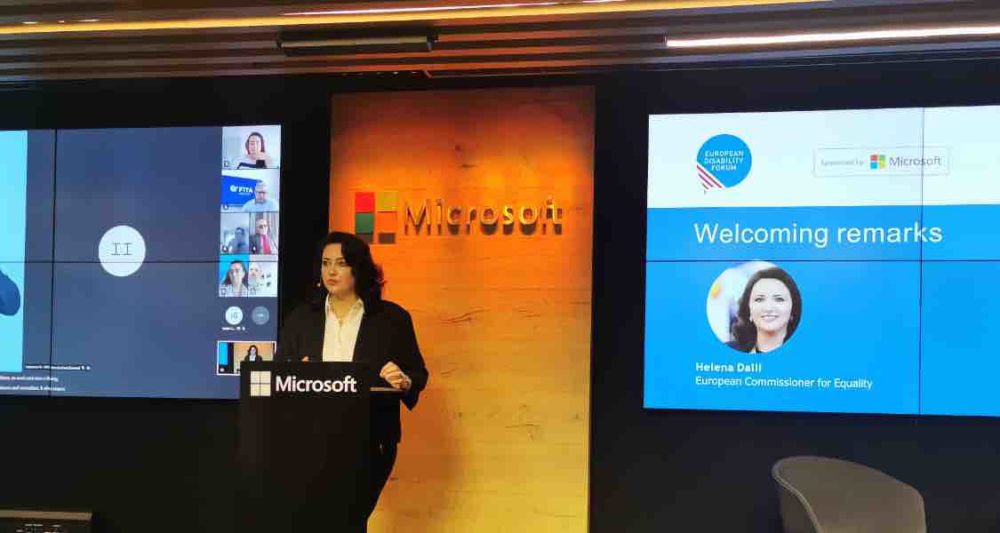
Ms Dalli mentioned that after the aftermath of COVID-19, which has had disproportional consequences for persons with disabilities, the EU is focusing even more on a disability-inclusive approach to make sure that persons with disabilities enjoy equal rights and opportunities.
Commissioner Dalli concluded her remarks by mentioning the new European Research Center, “accessible EU”, included in the EU Disability Rights Strategy which aims to provide good practice across all sectors. Through this new platform, the EU will try to ensure that persons with disabilities have better accessibility to buildings, transport, digital information and communication.
Before the first panel discussion kicked off, Inmaculada Placencia-Porrero, Senior Expert in Disability and Inclusion at Directorate-General Employment, Social Affairs and Inclusion at the European Commission, shared an overview of the adoption and transposition of the European Accessibility Act (EAA).
Ms Placencia-Porrero emphasised that the directive is “an opportunity, but it’s also bringing a lot of responsibilities for all stakeholders”. She highlighted the EAA is providing a specific role to all stakeholders and that all need to take responsibilities for the correct implementation. She concluded by asking for everyone’s support for the following steps.
Panel “Making the European Accessibility Act a reality at national level”
Moderator of the panel, Catherine Naughton, EDF Director, introduced the speakers: Sami Virtanen, Advisor on Accessibility and Digital Service at the Finnish Disability Forum; Carlo Stivala, Executive Head at FITA and Dr Anna Drabarz, Researcher and Human Rights Advocate and Board Member of the Polish Disability Forum who discussed from an EU perspective, an understanding of the challenges, good practices and difficulties of transposing the EAA at national level.
Panellists highlighted that the complexity of legislation has been a challenge because it is wide as a legislation but also the importance of raising awareness.
Fireside chat
After the break, the audience was invited to follow the conversation between Marijke Schroos, Public Sector Lead of Microsoft Belgium, and Jenny Lay-Flurrie, Chief Accessibility Officer of Microsoft.
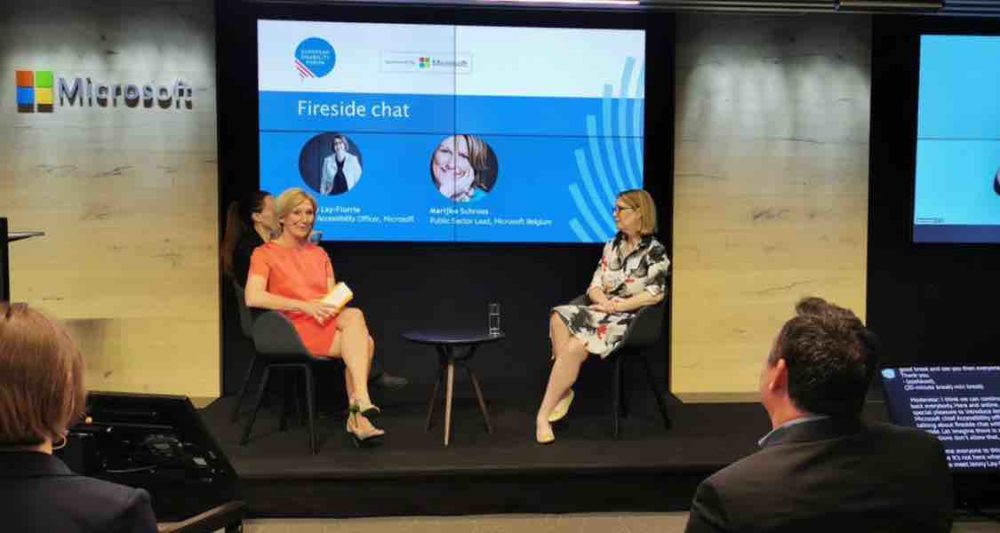
Ms Lay-Flurrie highlighted that for Microsoft it is a priority to keep moving towards an eco‑system and culture of accessibility. Moderator Ms Schroos pointed out that the European Accessibility Act is a great start but “each and every one of us needs to play that role” when it comes to raising awareness.To this thought Ms Lay-Flurrie added that the only way to have a huge impact is collectively.
In-person breakout: Assistive Technology Innovation
On the first day, in-person attendees were invited to follow a breakout session on Assistive Technology Innovation. Nadia Hadad, EDF Board Member, European Network of Independent Living, guided the conversation by asking the panellists about technologies available for persons with disabilities: how to make them affordable for users and how to ensure compatibility with other technology?
Hansjörg Lienert, Owner, Drager Lienert, admitted that having affordable assistive technologies was still a barrier. He explained that a solution would be to make every software accessible from the conception to operating stage, and to consider the variety of users and their needs to design solutions that suit the most.
Cecily Morrison, Principal Research Manager, Microsoft, confirmed that even when already existing, some assistive products were not known to their potential primarily users, and that is why developers must make sure to develop assistive technologies inside a mainstream eco‑system that will be used by the most.
When it comes to the research and development of AT, Christoph Mueller, Co-President, DAT Europe, explained that to reduce the gap between the available technology for consumer devices, the European Union has a role to play in investing in research and innovation, and enabling eco‑systems of ”small-techs”.
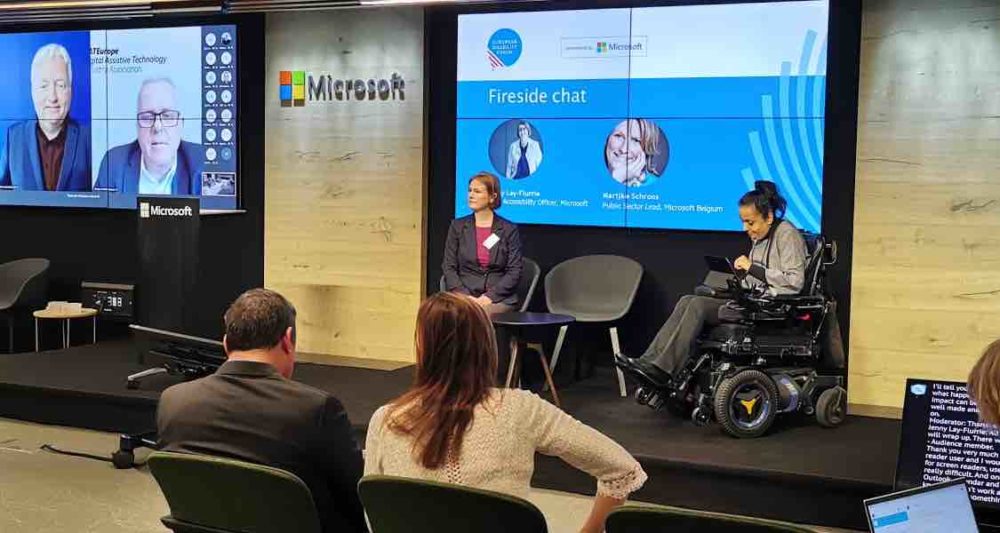
Breakout Session 1: Accessible ICT in Emergency Situations
One of the key sessions of the summit was devoted to Accessible ICT in Emergency Situations. Moderated by Rylin Rodgers, Accessibility Policy Advisor at Microsoft, the conversation first focused on the lessons learned and the role of technology in supporting the information needs.
Mark Wheatley, Executive Director at the European Union of the Deaf pointed out two main and intertwined issues: the development of technology and the technical support coming with these technological developments: “we see technology advances fast, but not the practical support working in parallel with that”. He also regretted that “all of the services are nationally-based”, creating situations like the ones of people fleeing from Ukraine who have no Ukrainian sign language interpreters when arriving in a neighbouring country.
Cristina Lumbreras, Technical Director at the European Emergency Number Association, confirmed that the use of technology in emergency situations varies from country to country: “in some countries you need to be pre-registered before being able to contact emergency services.”. She also found the lack of training from the emergency services perspective regrettable: “the call takers in the emergency 112 center are not well prepared to communicate using different languages. Or adapting to the needs of the citizens”.
Stefanie Dannenmann-Di Palma, External Relations Officer at the United Nations Office for Disaster Risk Reduction, completed by giving a concrete example of the lack of coherence and collaboration between countries: “last year we had big flooding in the south of Netherlands and Germany. In the Netherlands we have a texting system. And Germany didn’t have that. So the German people, on the German parts of the flooding areas, didn’t get the messages beforehand. They were using the microphones and loudspeakers in the cars. That is not useful for deaf people”.
As good practice, Wouter Bolier, Ieder(In) Policy Officer, explained how the 112 alliance in the Netherlands worked with government officials and persons with disabilities to ensure the accessibility of emergency platforms but introducing a real-time text chat function in the 112 app as a way of contacting 112 assistants.
Breakout Session 2: Accessible Gaming
What about accessibility in the entertainment field? This is the topic on which focused the online breakout session on Accessible gaming moderated by Jeremy Rollison, Senior Director at Microsoft.
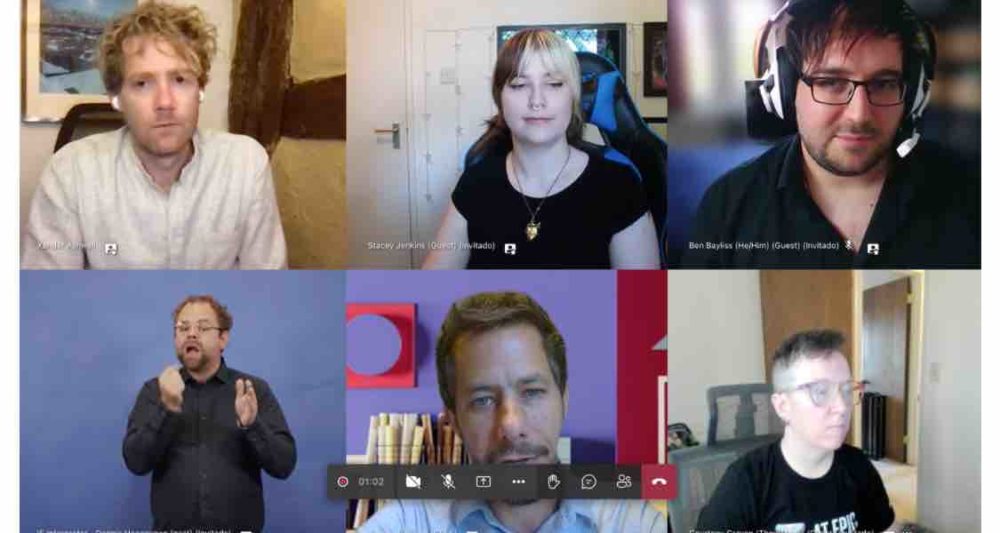
For Xander Ashwell, Director of Accessibility & User Experience at Xbox/Rare, the gaming world is a rich and complex environment that can provide users with a sense of community. The teams working on games have a large degree of control on how to build games and spaces, which for Xander, “can be a great opportunity for testing things and building products and services to move as many barriers as we can. Barriers in games are there for good reason, but we need to make everything accessible. There are areas of opportunity that don’t exist in the real world”. To him, accessibility goes beyond a game’s parameters and features: “you can build the most accessible game possible, but if all the other mediums aren’t accessible the problem still stands. How do we get the whole society to care about that?”.
When it comes to testing gaming products, Stacey Jenkins, Accessibility Project Manager at Ubisoft, highlighted the importance of bringing “disabled people in from the start of any project. If you already build a system without considering accessibility, it will take a lot more time to adapt or break barriers. You have to bring people in early”. And what if a gaming product has been designed without taking accessibility into account? To them, “it’s never too late to think about accessibility. Patches can be added post release. It’s important to make the effort. It can make a real difference”.
For Courtney Craven, Captioning Project Manager at Epic Games, the gaming and community advocacy has a role to play as in raising awareness and being a driver for change in the gaming industry: “I’m not doing game reviews anymore, but the critics remain the same. Seeing changes being implemented in a game is great. I used to play a game and told the creators where the barriers were, now I received a DM with some adaptation”. To her, the accessibility improvements does not come as a surprise, since the gaming industry realised the need to develop and focus on accessibility. But to achieve this change, Courtney insists on the fact that “we need to keep on pushing and advocate for the players” and to involve persons with disability in the heart of the gaming industry but making education related to the field – development, design, publishing – accessible.
For Ben Bayliss, Editor-In-Chief at “Can I Play That?” – an accessibility focused game reviews and news website – building fully accessible gaming products is difficult and that is why it is important to involve persons with disabilities in every step of the process: “we need to keep on insisting on accessibility towards creators.”. He ended on a positive note on the strong connection between creators and the gaming community “they often listen to the community and make changes”.
Panel “AccessibleEU center & international perspective”
The last panel of the first day was moderated by Rylin Rodgers, Accessibility Policy Advisor at Microsoft. Together, the panellists explored the European Disability Strategy and the creation of its resource center called “accessible EU”, and how it compares to the US Access Board, an agency that can support legislation .
Katarina Ivankovic-Knezevic, Director for the Social Rights and Inclusion at the directorate general for employment, social affairs and inclusion of the European Commission, acknowledged the inspirational role that the US Access Board had in the creation of the Accessible EU center. She also reminded the role and ambition of the Commission for this center: “a place and platform to exchange information and inform the Member States, and to give training of the various Accessibility contact points and institutions”. The center will also be a space for “reflection on the Accessibility standards, gathering the knowledge and documentation” on “everything that is linked to accessibility.” According to Ms Ivankovic-Knezevic, the main challenge that the Commission is facing is how to engage all 27 Member States, taking into account their different legislations and level of knowledge on accessibility. Although there is no official date for the launch of the Accessible EU center, Ms Ivankovic-Knezevic suggested that the platform and related activities could be launched by the end of 2022.
Katrin Langensiepen, Member of the European Parliament and of the Disability Intergroup, welcomed the Accessible EU center as a flagship initiative and reminded that “Accessibility is not only how I can jump on the train. It is also not only related to education or social benefits: it is more. It is related to all-different life periods and sectors… Persons with disabilities are not seen as clients and customers. And that is a problem”. For the Accessible EU center to be a successful and truly inclusive initiative, she insisted that “we need a center where people with disabilities are the experts. They are the experts in there. I can give the political start, but I am not an expert”.
Sachin Dev Pavithra, Executive Director of the US Access Board, then took the floor to give a short history of the US Access Board, from the first US piece of legislation on Accessibility in 1968 ( Architectural Barriers Act) to the creation of the US Access Board in 1973. He explained how the board had been involved in standards in information communication technology, in medical diagnostic equipment, passenger and right I transportation and ICT and built-in environment. He also explained the process through which the board gets input from all stakeholders, including industry, government officials, both Federal and State. He reminded how throughout the entire process, persons with disabilities have a central role to play in setting these standards, whether it is through public comment or informational meetings. He concluded by admitting the limits faced by the US Access Board: unlike the 12 key departments in the U.S Federal Government, the board sets the standards but does not enforce any of them. That enforcement mechanism comes from other departments.
Susanna Laurin, International Association of Accessibility Professionals (IAAP) Representative to the EU, expressed some concerns regarding the real impact of the Accessible EU Center: “I hope that this is not going to be just a discussion club but that it actually has some power and finances”. She warned that the center should not only serve to discuss the interpretation of accessibility standards, but it should also be a place with an End-User perspective where we can share best practices between Member States.
Alejandro Moledo, EDF Deputy Director, completed by saying that the initiative would only be considered successful “when the funding of EU Accessible Center is over” and that “the Commission and Member States are all eager to fund it again, to increase its responsibilities and power and make it grow” to support the monitoring and enforcement of Accessibility legislation “in a coherent manner”. He highlighted that still now, “the European standardisation system is not inclusive to persons with disabilities and the representative organisations. And this makes our job very difficult to come and have a meaningful say in the Accessibility standards that are derived such as the web directive from the web Accessibility Act”. He also welcomed the potential beneficial impacts of the center as a way to help the EU “define the priorities on Accessibility policies and to support bodies and regulators working on specific sectoral legislation”.
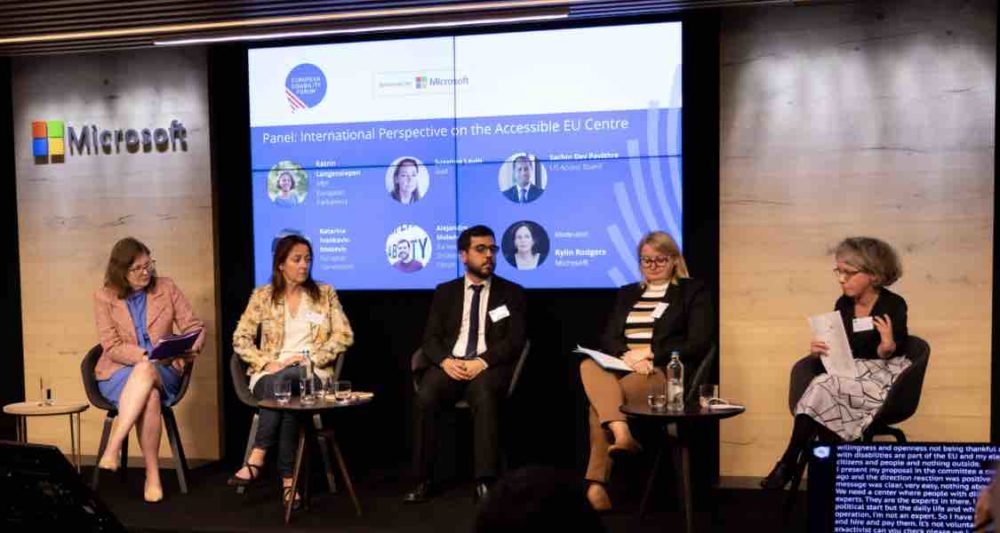
Day 2: 1st of June
The second day began with the introductory remarks by Michael Fembek, Director at the Zero Project. Mr Fembek explained how the organisation successfully is developing an ecosystem based on collaboration with zero barriers involving multidisciplinary expertise and involving persons with disabilities.
He showed the audience different projects ranging from computers controlled by a tongue or the iris to translation technologies. From Mr Fambek’s point of view, innovation is not only about the investment. He believes that depends on the original idea but also on social entrepreneurship: “people creating change”.
In-conversation “EU – US in comparison: what are the technological and policy developments?”
The conversation between Rylin Rodgers, Accessibility Policy Advisor at Microsoft and Alejandro Moledo, Deputy Director at EDF, began with a comparative review of the accessibility developments. While Mr Moledo recalled that in the EU, the word “accessibility” had been seen many years ago and in many ministerial contents there was no real commitment. “Accessibility was brought in the public procurement, thanks to the advocacy from our members’, stated Mr Moledo, adding that this is precisely what the EU Accessibility Act does: Define the terms of accessibility.
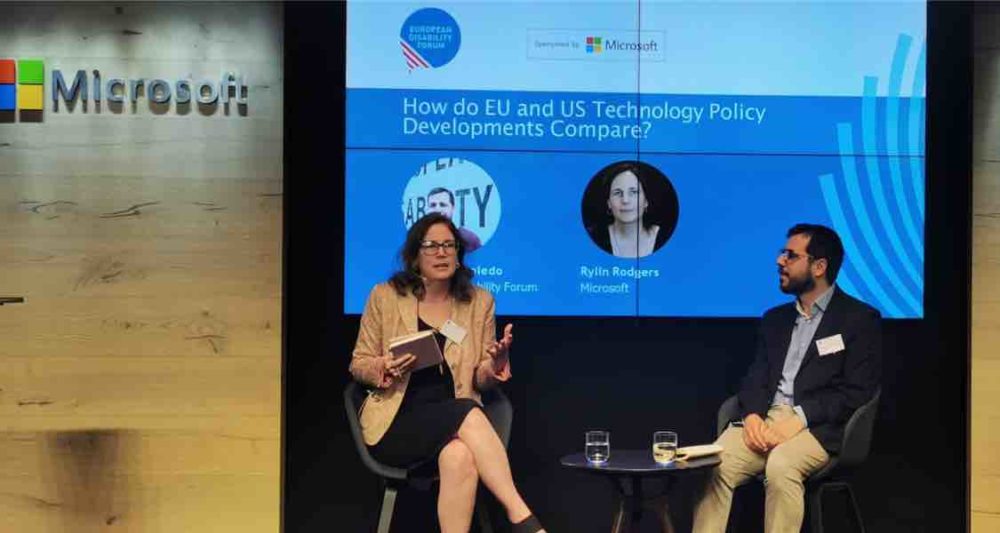
On her side Ms Rylin, from the EU perspective, noted that in the country, for almost 32 years now with the promise of ensuring accessibility but “we are not there yet”. She assured that sometimes additional actions are needed, and that is the reason why Microsoft has invested in new infrastructure systems and accessibility. “We need to remind policy makers that they have the tools: they just need to use them.” The power of disabled talent is changing the world in Microsoft.
Panel: Application of the European Accessibility Act
The first panel of the second EU Accessibility Summit day was moderated by EDF’s director, Catherine Naughton and gathered professionals from different businesses to explain what the European Accessibility Act means to them.
For Sabine Lobnig, Director of Communications at Mobile Wireless Forum, the European Accessibility Act is interesting, from a global manufacturer perspective, because it ensured the application of guidelines in a global way. But the main challenge in reaching accessibility in universal design in the telecommunication industry is the lack of awareness of existing technologies.
For Ligia Fonseca, Senior Manager, External Affairs Europe at the International Air Transport Association, the European Accessibility Act is a starting point and the bare minimum effort that products, services and economic agents have to put in place to ensure that products are accessible: “every single one is having a role to play. I think that the basis of this discussion starts with the UN Convention of the rights of people with disabilities”.
On a broader note, when it comes to the use of new technologies for accessible products and services, Remy Cadic, CEO at Acapela Group, sees new artificial intelligence algorithms as a way of reflecting the diversity of languages and providing users with highest quality speech and new voices through speech generating devices.
For Roberta Capellini, service design lead at UniCredit, digital transformation is an opportunity to put together teams focused on accessibility, rethink and reshape products and services, and design new accessible products from scratch. To her, having an inclusive mindset should not be the work of a few people, but should be a collective goal. With the application of the European Accessibility Act, there is an opportunity to foster cultural change within organisations.
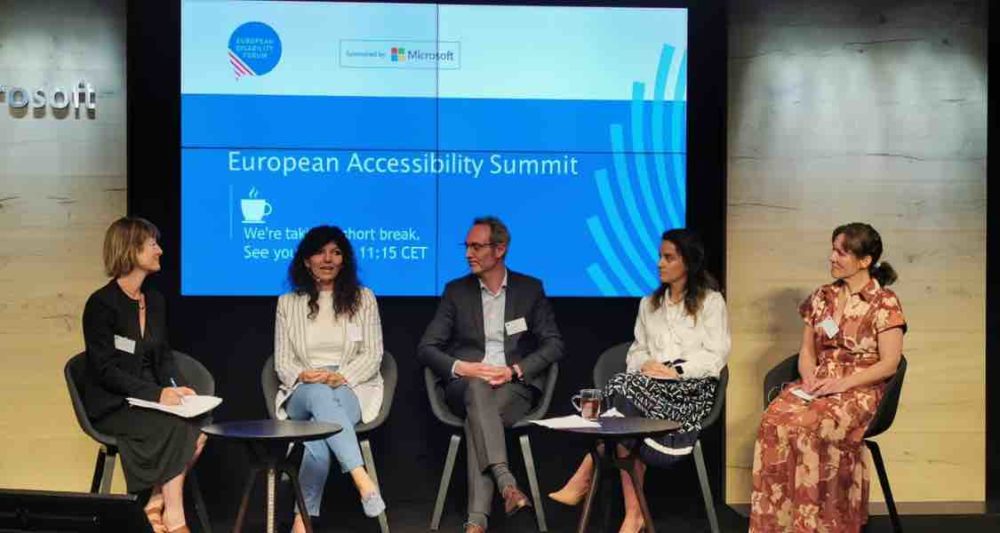
Presentation: Artificial Intelligence (AI) for Accessibility
For the next 45 minutes, Ioana Tanase, Engagement Strategy Program Manager at Microsoft, took the floor to introduce Microsoft’s AI for Accessibility programme “to empower researchers, startups, non‑profits and assistive technology companies to push the limits of what AI can do in accessibility”. She highlighted the current limits of AI algorithms and explained high-tech companies’ responsibilities to “improve the fairness of the system when it comes to gender, race and disability and other elements”. She assured that “AI systems built by and with the disability community will reflect a wider spectrum of users” and presented the three foundational pillars of Microsoft’s AI programme: education, employment and community.
Panel: Smart Cities
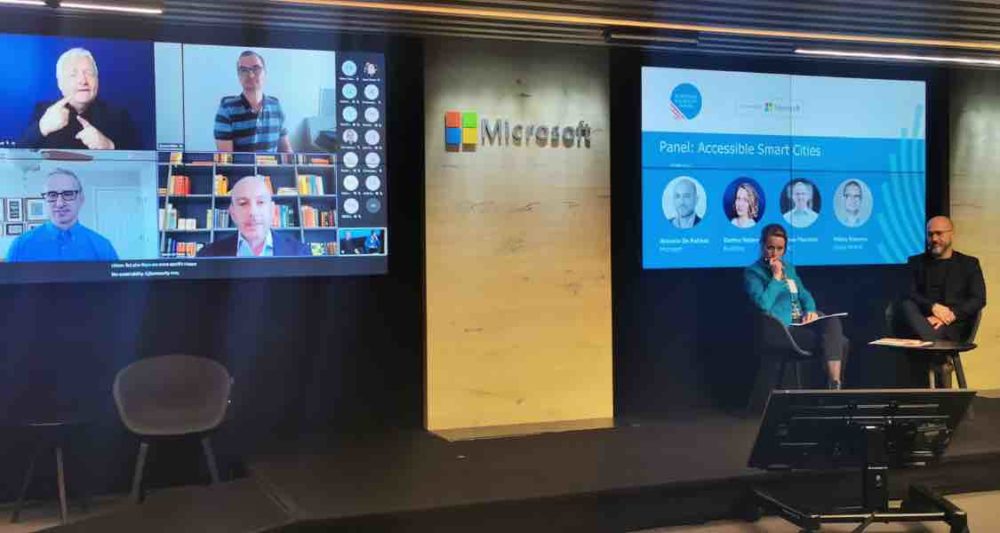
In the last panel of the event James Thurston, Vice President of G3ict; Dorthe Nielson, Executive Director of Eurocities and Mikko Rusama, Chief Digital Officer of Digital Helsinki discussed the role of smart cities in the process of inclusion, integration through accessibility, and the role of smart cities in the process of inclusion.
Moderated by Antonio De Palmas, Vice President Global Market Development of Microsoft, the panellists said that inclusive smart cities are cities using technologies and data that promotes the rights and inclusion of persons with disabilities. However, they warned that although digitisation is increasing, it is necessary to take measures to avoid the gap it can produce. Digital transition can be a huge driver for cities to become more inclusive but if a smart city cannot be smart if not accessible they noted.
Windows Accessibility
Carolina Hernandez, Principal PM Manager at Microsoft presented some of the new accessibility features included in Windows. By looking at hearing, physical, cognitive and vision disabilities Microsoft continues to focus on making it easier for all users. The company has improved the keys, a responsive and flexible accessibility platform making it easier for assistive technologies. They will also soon release the new Windows 11 with live caption for any audio and voice axis to control the PC with the voice.
Closing
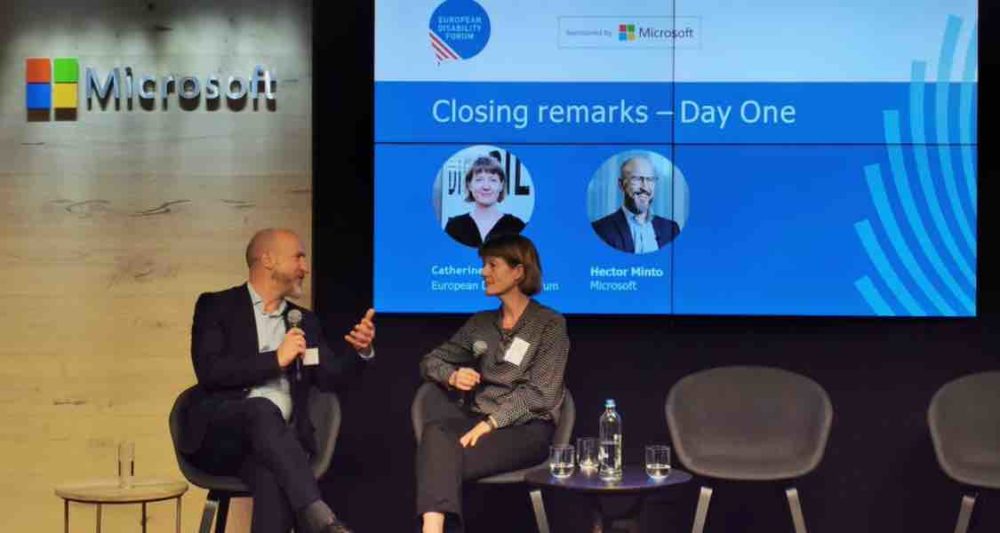
The European Accessibility Summit concluded with some closing remarks by Catherine Naughton, Director at EDF and Hector Minto, Accessibility Evangelist at Microsoft.
Hector highlighted that it is important that the industry wanted to get into the conversation on the European Accessibility Act and he reminded that accessibility should be treated as more than just “glitter”.
Catherine concluded by saying that the commitment to accessibility is very important for the real inclusion of persons with disabilities and thanking Microsoft for their support.